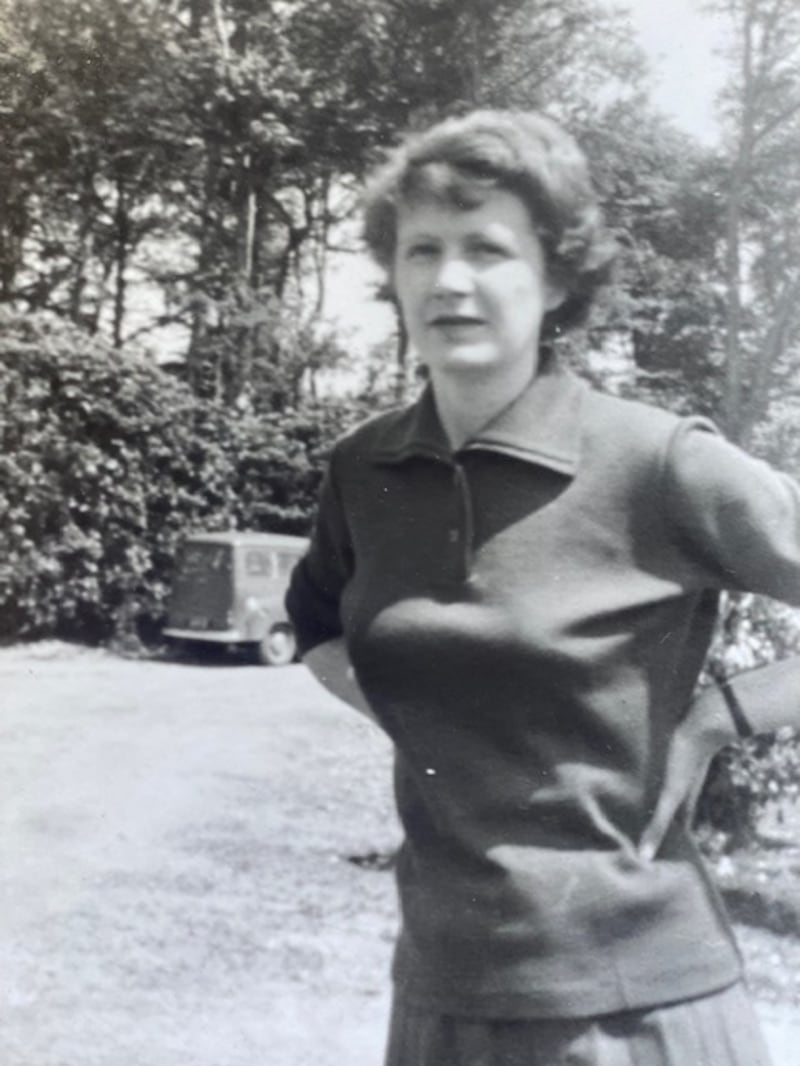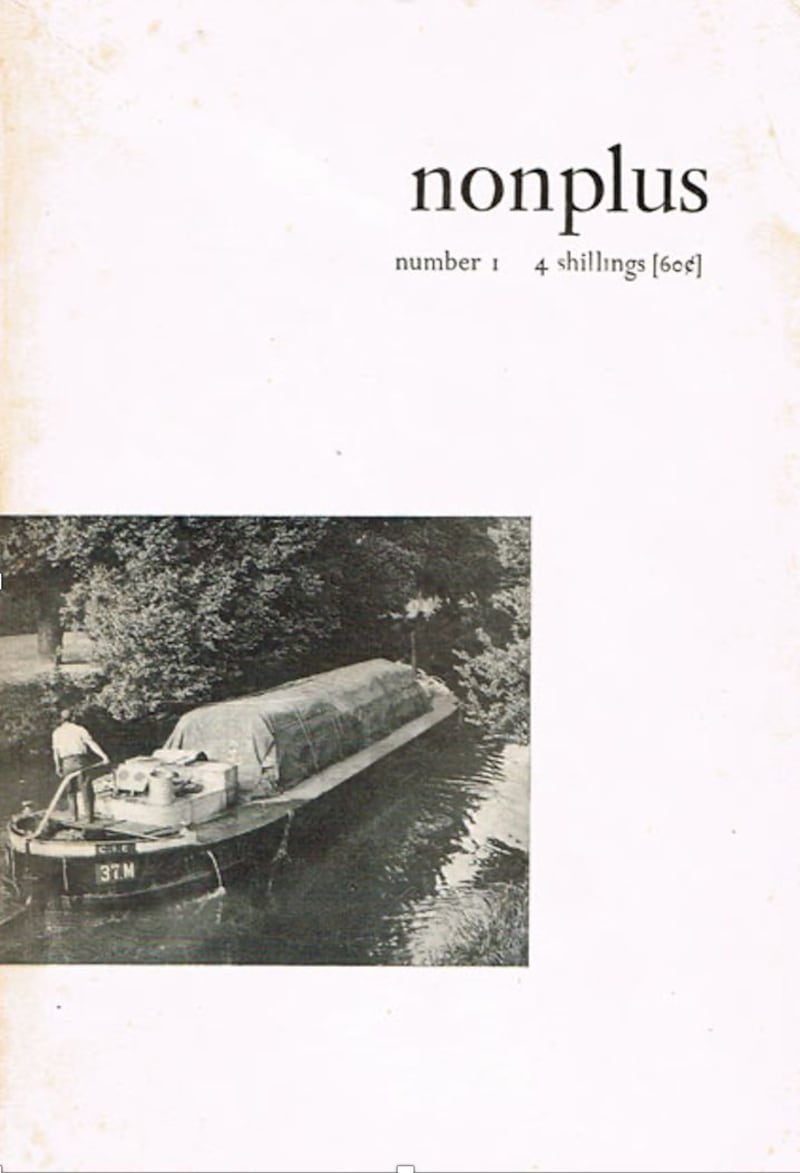In her ground-breaking memoir Are You Somebody? Nuala O’Faolain recalled a lost literary voice of the mid-20th century, the Irish poet, author and editor Patricia Avis. “She was as clever as the clever men,” O’Faolain asserted, “I see articles about her that imply that she was a doomed soul. That’s an argument often used to cover up indefensible circumstances”.
Born in Johannesburg in 1928 to an Irish mother and a wealthy Dutch-Afrikaner father, Avis’s literary ambitions as a young woman led her into the post-war literary circles of Britain and Ireland. The intense and turbulent relationships she developed with poets Philip Larkin and Richard Murphy, and the tragic circumstances of her death in 1977, have seen her crudely characterised as the ill-fated object of male desire. Yet Avis’s portrayal as a doomed soul belies her active and influential presence among her literary contemporaries, as both a poet and editor in the periodicals of her time.

Readers of The Irish Times on October 18th, 1958, would have encountered a short, strange poem titled Jellyfish in the paper’s books section. Written by Avis, Jellyfish is a poem on the move, following a restless holidaying couple as they drive out into the Ards Peninsula. “They should have kept south on the highway / With an eye to food and drink,” it opens, as the couple are led by “signposts / Briskly asserting on always on”. They are a “blundering” presence across the coastal landscape, eventually landing on a pier and coming upon a marooned jellyfish that seems to encapsulate their unease, “puckered and stayed / With violet hoops, too long lost like this”.
If the poem captures a feeling of anxiety in nature that resonates with our own time, its restless energy reflects the mobile spirit of a poet who moved between Britain and Ireland in the 1950s and 1960s.
Raised in Johannesburg, Avis’s precocious intellect led her to England at the age of 17 to study medicine at Somerville College, Oxford. “Her brilliance was scary,” Richard Murphy has recalled in his 2002 memoir The Kick: A life Among Writers. But having completed her degree and qualifying as a doctor in 1951, Avis refrained from taking up a formal practice, drifting away from the medical world into the vibrant literary milieu that would shape the course of her life over the next two decades.
She first arrived in Belfast in 1952 with her newly married husband Colin Strang, who had taken up a position as lecturer in philosophy at Queen’s University. There Avis began a blustery two-year affair with Philip Larkin, who was employed as a sub-librarian at the university and was on the brink of becoming one of the leading British poets of his generation. The affair has since determined Avis’s image in literary studies, where she is typically cast as the alluring but troubled woman left in the wake of a brilliant literary man. Larkin’s biographer Andrew Motion crudely characterises her as a “promiscuous” lover who “dissolved his worries about sex”, while James Booth dismisses her in wildly emotionalised terms as “the helpless victim of a doomed passion”.
While the affair was undoubtedly a tumultuous experience for the younger Avis, as she described “weeks of fretful, furtive planning” for a “few doubtful hours of anxious, taut pleasure”, the biographers have failed to note how their relationship eventually matured into a creatively nourishing friendship. As their surviving correspondence attests, Larkin regularly opened up to Avis about his doubts and frustrations and even revised some of his poems based on her suggestions, backing up the later assertion by Murphy that she “improved my writing with her sensitive criticism”.

Larkin included Avis’s poem Le Deuxième Sexe in the 1958 anthology New Poems, which he edited with Louis MacNeice and Bonamy Dobrée. While at Oxford, Avis had developed a love of French literature and culture and eventually moved to Paris in 1954 for a brief period following the break-up of her marriage. With its title taken from Simone de Beauvoir’s landmark 1949 study of the representation of women throughout history, Le Deuxième Sexe signals the cosmopolitan affiliations that defined Avis’s writing in these years.
The poem playfully enacts the age-old personification of woman in nature by feminising a field of haystacks, which are first described in shapely terms as “firm, plump, conical” that tease with feminine fertility tropes, before acknowledging their suffering endurance of the elements and revealing beauty, “Sun soaked, wind scarred, / By moonlight monumental”. The haystacks are then more sensitively imagined as isolate beings in a crowd:
"It's not as if one feared
To make a move, commiserate
With another across the way;
It's just that each has its own knack
Of living with a shadow."
Avis settled in the Republic of Ireland in 1955 with her second husband Richard Murphy, who that year published his first poetry collection The Archaeology of Love with the Dolmen Press. They lived together in a remote lodge in rural Wicklow, formerly owned by Ernest Gébler and Edna O’Brien, where Avis gave birth to their daughter Emily in 1956. The marriage would be short-lived, however, ending in divorce in 1959, at which time Avis moved to Dublin and into the top two floors of 1 Wilton Place, near Baggot Street Bridge. She quickly established Wilton Place as an open house for poets and writers, with Patrick Kavanagh and Brian O’Nolan among her regular visitors.

From Wilton Place, Avis set up the cultural review “nonplus”, an ambitious “essayists quarterly” that ran for four issues between 1959 and 1960. Printed at Liam Dolmen Press, nonplus featured a series of prose and poetry contributions from Kavanagh; extracts from Myles na gCopaleen’s popular Irish Times column Cruiskeen Lawn, and extended essays from Hubert Butler and Brian Inglis. Kavanagh’s inclusion of the now famous sonnet Canal Bank Walk in the first issue linked his own late period of poetic rebirth with the launching of the new magazine, where he praised the vitality of ordinary experience in enabling him “to pray unself-consciously with overflowing speech”.
Avis’s editorship of nonplus arguably marked the high point of her literary career in Dublin, during which time she also continued to publish her own poetry in periodicals such as The Irish Times, the Listener and the University Review. She never succeeded in publishing a first poetry collection, a fate that has subsequently consigned her to the margins of literary history. Though she received notable early support from prominent literary men of the era, the challenges faced by aspiring women poets in the male-dominated publishing world of the 1950s and 1960s were formidable. Her personal struggles were compounded by depression into the 1970s, exacerbated by alcoholism and substance abuse and culminating in her tragic death on September 2nd, 1977.
But Avis's lost literary story can begin to be recovered by attending to the poems that she has left scattered across the magazines of the mid-20th century and by revisiting her other literary works such as the posthumously published novel Playing the Harlot, Or, Mostly Coffee (Virago, 1996). When we re-situate her as writer, editor and patron in the transnational literary networks and publishing contexts of the mid-20th century, she becomes a dynamic and challenging presence among her contemporaries. For O'Faolain, she was "nearly in time for the break-out – for getting support from other women, getting published by women's presses and so forth. But when she was in her prime, writing and publishing was a man's world".
Conor Linnie's essay on Patricia Avis features in the collection Irish Women Poets Rediscovered: Readings in Poetry From the Eighteenth to the Twentieth Century (Cork University Press), edited by Conor Linnie and Maria Johnston.











